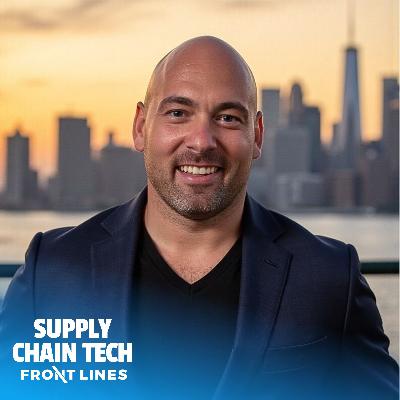Why Runway spent $40K on hot sauce | Siqi Chen
Description
Runway is building FP&A software that solves what Siqi Chen calls "the impossible problem"—matching Excel's speed and flexibility for thinking while functioning as an enterprise finance platform. In this episode of The Front Lines, wew sat down with Siqi to unpack Runway's mischief marketing playbook, why they enriched hot sauce pre-orders for lead gen, and how they're implementing AI as a coworker rather than a copilot.
Topics Discussed:
- The unit economics behind the Burn Rate hot sauce campaign: $40K spend, 5K pre-orders, millions of views
- How Siqi justifies creative marketing spend as CEO and CFO: downside scenarios must break even, upside gets uncapped returns
- Naval's prescient 2020 advice: don't call it CFO AI because "everything's going to be AI anyway"
- Why finance buyers completely flipped on AI in 24 months—from indifferent to requiring it
- The three emotional triggers that drive FP&A tool adoption: frustration, resentment, anxiety
- Runway's approach to competing with Excel by changing abstraction layers, not features
- Building AI as a coworker (Ari) that lives in Slack, email, and comments—not a sidebar
- Why proof-of-human marketing compounds in value as AI slop becomes the baseline
GTM Lessons For B2B Founders:
- Model creative campaigns like venture bets with downside protection: Siqi's framework: $40K for 200 hot sauces wrapped with $100 bills equals 1.5 deals to break even at mid-five-figure ACVs. But the real play was generating 5,000 pre-orders, enriching the top 200, and converting ICP matches at "well above 1%" into pipeline. The math ensures you don't lose money in downside scenarios while creative execution delivers uncapped upside. For B2B founders: calculate your break-even deal count, then structure campaigns where lead gen mechanics provide a safety net under the brand play.
- Hire for proof of work, not creative credentials: When Cal (Taika co-founder) cold-emailed Siqi with designed mockups of Burn Rate hot sauce and Runway jerseys, that was the interview. Siqi was already a Taika customer who remembered the 415 phone number branding on the can. His advice: "There's no better resume than someone saying 'hey, I submitted a pull request' or 'here's some designs.'" For creative roles especially, evaluate the artifacts directly rather than filtering through credentials or pitches about what they could do.
- Sell to emotion-driven active searchers, not satisfied users: Runway identified three specific emotions that trigger FP&A software searches: frustration (manually pulling from 20+ data sources monthly, copy-pasting QuickBooks exports), resentment (department heads treating finance requests as "the stupid form" and ignoring deadlines), and anxiety (one error in 10 million Google Sheets cells breaks the entire model). These aren't rational pain points—they're emotional breaking points that drive active solution-seeking. Don't build go-to-market around convincing satisfied Excel users. Instead, optimize for discovery when these specific emotions converge.
- Treat abstraction changes as category creation opportunities: Siqi explains Airtable's success came from changing Excel's abstraction from cell to row, enabling databases and applications. Runway's insight: business planning requires abstraction changes that Excel can't provide—specifically treating the model as a "game engine" or "simulation of a business" rather than a spreadsheet. The category emerged from that technical insight, not from marketing positioning. For technical founders: identify where your abstraction layer change creates fundamentally new capabilities, then let category definition follow from customer language around those capabilities.
- Time creative marketing to buyer perception shifts: Two years ago, Runway demoed AI features to leads who "didn't care at all." Today, buyers "don't care what the AI feature is, they just care that it's AI"—a complete flip. Meanwhile, Runway's competitors use .ai domains while Runway uses .com, creating unexpected differentiation. The lesson: buyer perception of emerging technologies follows unpredictable curves. Creative marketing that feels early can land perfectly if timed to perception inflection points. Track not just technology maturity but buyer discourse and demand signals to time creative bets.
//
Sponsors:
Front Lines — We help B2B tech companies launch, manage, and grow podcasts that drive demand, awareness, and thought leadership. www.FrontLines.io
The Global Talent Co. — We help tech startups find, vet, hire, pay, and retain amazing marketing talent that costs 50-70% less than the US & Europe. www.GlobalTalent.co
//
Don't Miss: New Podcast Series — How I Hire
Senior GTM leaders share the tactical hiring frameworks they use to build winning revenue teams. Hosted by Andy Mowat, who scaled 4 unicorns from $10M to $100M+ ARR and launched Whispered to help executives find their next role.
Subscribe here:
























